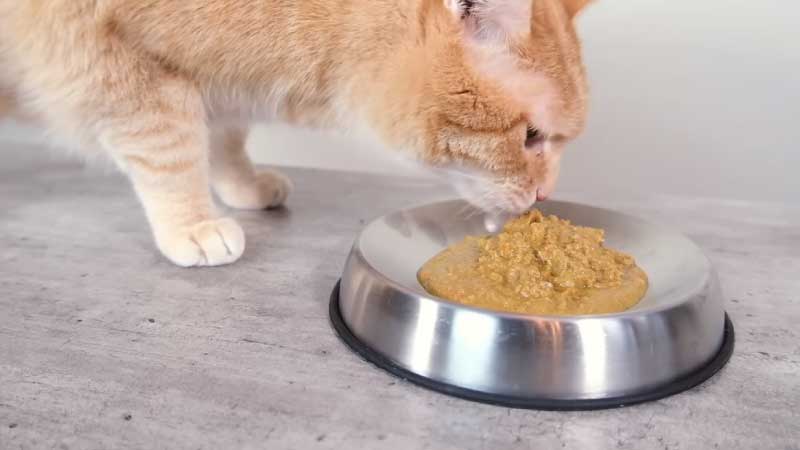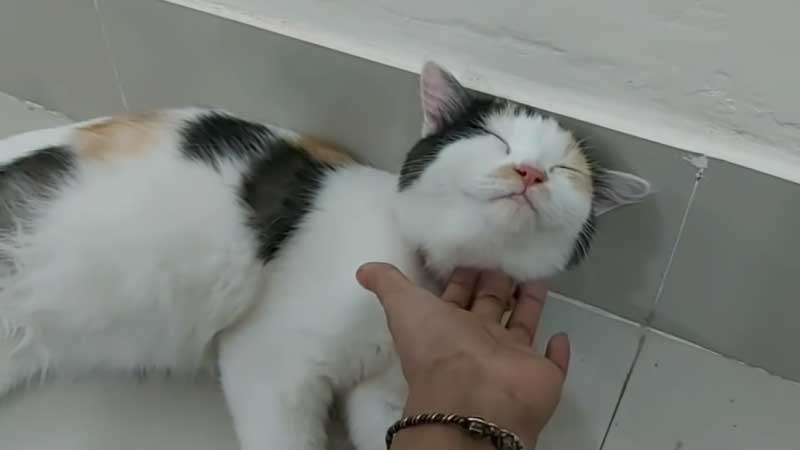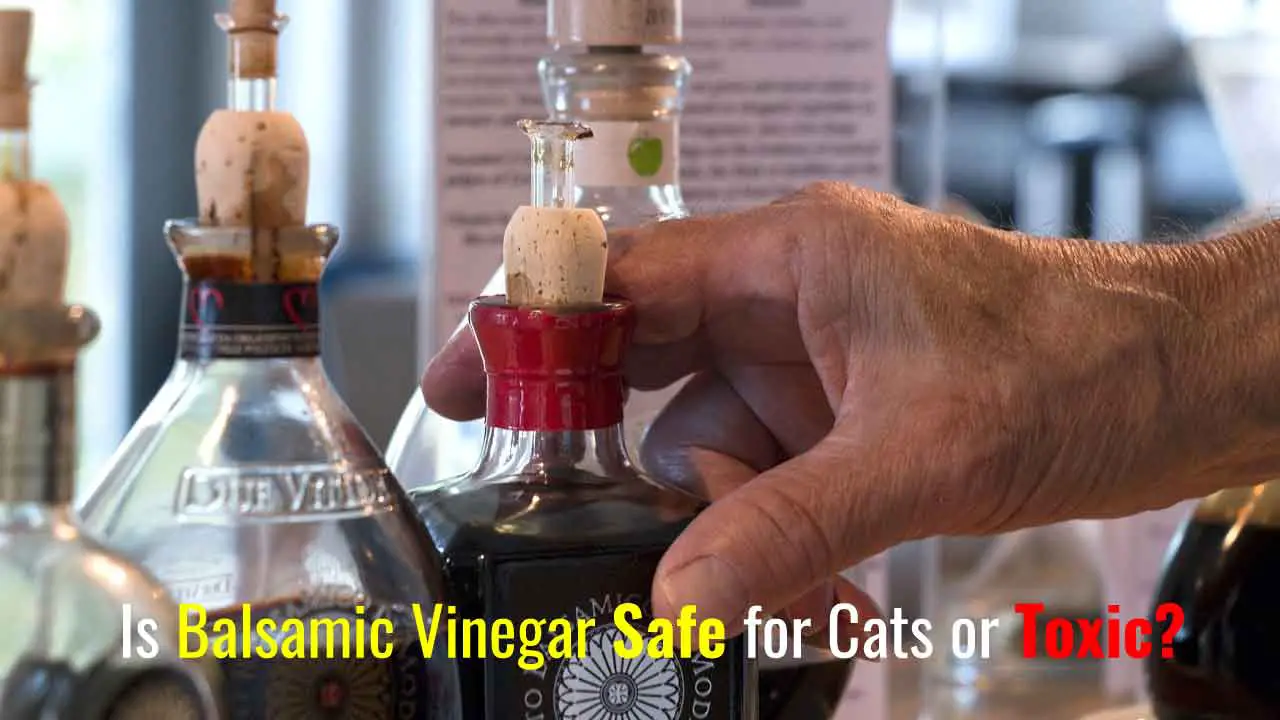You’ve just ripped open a can of your cat’s favorite wet food and got distracted; it happens to most of us. But now you’re searching, “How long can you leave wet cat food out before it spoils?”
The quick answer? Typically, for about 2 hours, you can leave a wet cat food can out, but hold on! There are a lot more details to uncover.
Whether you’re a first-time feline owner or a seasoned cat whisperer, our in-depth guide will dish out everything you need to know to keep your kitty’s meals safe and yummy. Purrfect reading awaits below!
Table of Contents
How Does Spoiled Wet Cat Food: Factors Affecting

No doubt wet cat food is a tasty treat for our cat, but it can quickly go from feast to fiasco if not stored correctly. Here are the key factors that influence how rapidly wet cat food spoils once opened:
Temperature:
- Room Temperature: At an average room temperature, wet cat food can start to spoil within 2 to 3 hours.
- Hot Conditions: In warmer climates or during the summer months, this timeline can be shortened drastically.
- Cold Conditions: Conversely, in cooler environments, the food might last a bit longer, but it’s always best to err on the side of caution.
Humidity and Air Exposure:
Moist and humid conditions promote bacterial growth. Leaving wet cat food uncovered can expose it to additional environmental moisture, hastening spoilage. Additionally, prolonged exposure to air can result in the food drying out and becoming unappetizing.
Ingredients and Preservatives:
- Natural Ingredients: Foods that prioritize natural ingredients without added preservatives may have a shorter shelf life after opening.
- Artificial Preservatives: While they may extend the freshness of the food, they come with their own set of controversies regarding pet health.
Container Type:
The type of packaging can impact spoilage. While both cans and pouches are designed to keep food fresh until opened, once exposed to air, the contents of a pouch might spoil faster due to the larger surface area.
Cross-Contamination:
Using dirty dishes or bowls can spread harmful bacteria into the food. Always ensure that the dishes and tools you use to serve your cat are clean.
Food Portioning:
Taking out large quantities and then returning unused portions back to the container can introduce bacteria and speed up spoilage.
Read More: Is Blue Buffalo Cat Food Killing Cats
How Long Can You Leave Wet Cat Food Out Before It Spoils: The Safe Duration

Navigating the world of feline nutrition comes with its complexities, and knowing how long you can safely leave out wet cat food is crucial. Let’s delve into the specifics to make sure our furry friends get the freshest and safest meal possible.
The 2-Hour Rule: As a general guideline, most veterinarians and pet nutritionists recommend not leaving wet cat food out for more than 2 hours at room temperature. After this period, the risk of bacterial growth and spoilage increases significantly.
During Hot Weather: In high temperatures, especially during scorching summer days, wet cat food can start to spoil in as little as 1 hour. Heat accelerates bacterial growth, making it essential to be even more cautious about feeding durations.
During Cold Weather: If your home is particularly cool, you might find that wet cat food remains fresh for slightly longer than the 2-hour mark. However, it’s always best to play it safe. Even in cooler conditions, it’s wise to remove uneaten food after 4 hours.
Refrigeration: If you’ve dispensed more food than your cat can eat in one sitting, consider refrigerating the leftovers immediately. Once refrigerated, the wet food can last for up to 2 days. Remember to cover the food, either with a tight-fitting lid or plastic wrap, to maintain its freshness and prevent it from absorbing other odors.
Re-serving Refrigerated Food: When giving your cat previously refrigerated food, it’s a good idea to allow it to come to room temperature. Cats often prefer their food this way. However, once you’ve taken it out, don’t leave it for more than 2 hours, even if it was refrigerated.
How to Tell If Wet Cat Food Has Gone Bad: Signs of Spoiled Wet Cat Food

Feeding your feline friend? Knowing the signs of spoiled wet cat food can mean the difference between a happy purring pal and an upset kitty stomach. While wet cat food has its merits, it’s essential to serve it fresh to ensure your cat’s health. Here’s what you should watch out for:
Sign 1: Off-Putting Smell:
Fresh, wet cat food has a distinct, meaty aroma. If your cat’s food emits a sour, rancid, or otherwise unpleasant smell, it’s a clear sign it’s gone bad.
Sign 2: Discoloration:
While color variations are typical depending on the ingredients, be wary if the food’s hue changes after it’s been opened and left out. Any unusual dark spots or greenish molds are also red flags.
Sign 3: Change in Texture:
Spoiled cat food may become slimy or overly dry, depending on the environmental factors it’s exposed to. If the food’s texture feels different than usual, it’s best to discard it.
Sign 4: Presence of Mold:
This is an undeniable sign that the food has spoiled. Mold can appear as fuzzy spots of white, green, or even black. If you spot any mold, it’s crucial to discard the entire portion, as some mold types can be harmful when ingested.
Sign 5: Your Cat Refuses to Eat It:
Cats have an innate sense of what’s good for them. If they sniff the food and walk away, it might be a sign that something’s amiss. Trust your cat’s instincts.
Sign 6: Gassy or Fermented Odor:
A yeasty or beer-like smell can indicate the growth of harmful bacteria or other microorganisms in the food, signaling spoilage.
Sign 7: Swelled or Leaked Packaging:
If you notice cans bulging or pouches leaking, it’s possible the food inside has spoiled, producing gases or liquids that cause the packaging to deform.
How to Make Wet Cat Food Last Longer: Tips for Keeping Wet Cat Food Fresh
Keeping your cat’s wet food fresh isn’t just about pleasing their finicky palates; it’s crucial for their health. Since wet cat food can spoil faster than dry varieties, following some simple steps can ensure your feline friend always has a safe and scrumptious meal:
- Store Unopened Cans in a Cool, Dry Place: Keep your stock of wet cat food in a pantry or cupboard, away from direct sunlight or heat sources, to maintain its shelf life.
- Use Airtight Containers: If you don’t use an entire can in one feeding, transfer the leftovers to an airtight container before storing it in the fridge. This will preserve its freshness and prevent the food from absorbing other odors.
- Refrigerate Leftovers Promptly: Once opened, any unused portion of wet cat food should be refrigerated immediately. Generally, refrigerated wet cat food can last for up to 2-3 days.
- Serve at Room Temperature: Cats often prefer their food at room temperature. If you’ve stored the food in the fridge, consider setting it out for about 15-20 minutes before feeding time or slightly warming it. However, never leave it out for more than 2 hours.
- Avoid Cross-Contamination: Always use clean utensils and bowls when serving wet cat food. This will prevent the introduction of harmful bacteria, which can expedite spoilage.
- Monitor Portion Sizes: It’s a good practice to offer smaller portions at a time. If your cat finishes it all, you can always provide a little more. This way, there’s less wastage and reduced risk of leaving spoiled food out.
- Keep the Lid: If you’re using a can, some come with plastic lids designed to fit over the open end. This can be handy for short-term storage in the fridge between feedings.
- Rotate Your Stock: Just like with human food, use the “first in, first out” rule. Use the older cans first to ensure you’re constantly feeding the freshest possible food.
- Check Expiry Dates: Before opening a new can or pouch, always check its expiration date. Even if the food looks and smells okay, it’s best not to serve anything past its “best by” date.
What Happens If a Cat Eats Expired Cat Food: Health Implications

As meticulous as we might be, there can be moments where our careful eyes miss the signs and our cats end up consuming food that’s past its prime. Understanding the potential health implications can help you take swift action and ensure your feline friend’s well-being.
Gastrointestinal Upset:
The most common symptom of consuming spoiled or expired food is gastrointestinal distress. This can manifest as:
- Vomiting
- Diarrhea
- Loss of appetite
- Abdominal pain or discomfort
Food Poisoning:
Spoiled food can harbor harmful bacteria, like Salmonella or E. coli. Ingesting these pathogens can lead to food poisoning, which may present with more severe symptoms like fever, lethargy, and dehydration.
Pancreatitis:
If your cat consumes food that’s rancid or has high levels of fat, it can trigger pancreatitis, an inflammation of the pancreas. Symptoms might include vomiting, diarrhea, a hunched back, and abdominal pain.
Fungal Infections:
Moldy food can contain mycotoxins, which are harmful compounds produced by certain fungi. Ingesting these can lead to fungal infections, with symptoms ranging from respiratory issues to neurological problems.
Allergic Reactions:
While less common, some cats might develop allergic reactions to compounds in spoiled food, leading to itching, swelling, or respiratory distress.
Read Also: Cat Stopped Eating Wet Food But Will Eat Dry
What to Do If Your Cat Has Eaten Spoiled Food?
It is essential that you take the situation with the utmost seriousness and immediately take the necessary steps to facilitate the rapid recovery of your cat friend. At first, keep a close eye on your cat for any signs of distress or unusual behavior.
- Withhold food for 12 to 24 Hours: Allowing the cat’s digestive system to rest can help. Ensure they have access to plenty of fresh water during this time.
- Consult Your Veterinarian: If you observe any symptoms or your cat appears to be in discomfort, contact your veterinarian immediately. Describe the situation and any symptoms you’ve observed.
- Keep a Sample: If possible, keep a sample of the spoiled food. Your vet might want to analyze it to determine the cause of the reaction.
Wet Cat Food vs. Dry Cat Food: A Brief Comparison
| Criteria | Wet Cat Food | Dry Cat Food |
| Spoilage Rate | Spoils quickly after opening, usually within 4 hours at room temperature. | Has a much longer shelf-life once opened, can last several weeks if stored properly. |
| Convenience Factors | – Requires refrigeration for leftovers. – Heavier and takes up more storage space. – More challenging for extended travel. | – No refrigeration needed. – Lightweight and easy to store. – Ideal for long-term storage and travel. – Suitable for automatic feeders. |
| Nutritional Differences | Has a much longer shelf-life once opened, and can last several weeks if stored properly. | – Low in moisture; cats may need additional water intake. – Often contains higher carbohydrate levels. – Crunchy texture can assist in dental health. – Might contain more fillers. |
| Cost | Generally more expensive per meal. | Typically more cost-effective and budget-friendly for daily feeding. |
| Storage Needs | Cans or pouches may need more space and are prone to spoilage if not stored correctly. | Easy to store in bulk; less sensitive to environmental changes if the bag is sealed. |
FAQs on Wet Cat Food and Spoilage
How long is it safe to leave wet cat food out at room temperature?
Wet cat food should not be left out at room temperature for more than 2 hours. After this period, it’s best to discard the food, as it might be unsafe for consumption.
Can I refrigerate and reuse uneaten wet cat food?
Yes, if your cat doesn’t eat all the wet food in one go, you can store the leftover food in an airtight container and refrigerate it. Make sure to use it within 2 to 3 days.
Is it safe for my cat to eat wet food that has been left out overnight?
It’s not recommended. Wet cat food left out overnight can harbor harmful bacteria, making it unsafe for your cat to consume.
Does wet cat food spoil faster in the summer or in warmer climates?
Yes, warmer temperatures can increase the spoilage rate of wet cat food. It’s essential to monitor and not leave it out for extended periods, especially in hotter conditions.
How can I tell if wet cat food has gone bad?
Signs of spoiled wet cat food include an off-putting or sour smell, discoloration, a change in texture, the presence of mold, and if your cat refuses to eat it.
Can I freeze wet cat food to extend its shelf life?
While it’s possible to freeze wet cat food, it can alter the texture and taste, which some cats might not prefer. If you choose to freeze it, thaw it in the refrigerator before serving and ensure it’s used within a short time.
Why does wet cat food spoil faster than dry cat food?
Wet cat food has a higher moisture content, making it a conducive environment for bacteria and mold growth when exposed to air, whereas dry cat food has low moisture and is less prone to rapid spoilage.

Final Verdict
It is important to be mindful of how long you can leave wet cat food out before it spoils. While the specific timeline may vary depending on various factors such as temperature and ingredients, a general guideline is to not leave wet cat food out for more than 2 hours.
This helps to ensure that your cat is consuming safe and fresh food. Remember to always check for any signs of spoilage, such as changes in texture or odor, before feeding your furry friend. By following these guidelines, you can help keep your cat happy and healthy!
So next time you serve wet cat food, remember to remove any leftovers within a couple of hours and store them properly. Your feline friend will thank you for it!




